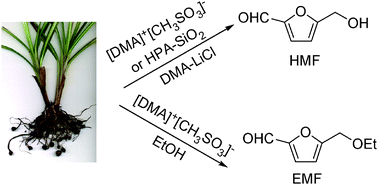Solid-acid and ionic-liquid catalyzed one-pot transformation of biorenewable substrates into a platform chemical and a promising biofuel†
Abstract
A wide variety of polymeric

* Corresponding authors
a
Laboratory of Catalysis, Department of Chemistry, North Campus, University of Delhi, Delhi, India
E-mail:
bsaha@chemistry.du.ac.in
Fax: 91 2766 7794
Tel: 011-2766 6646
A wide variety of polymeric

 Please wait while we load your content...
Something went wrong. Try again?
Please wait while we load your content...
Something went wrong. Try again?
Md. Imteyaz Alam, S. De, S. Dutta and B. Saha, RSC Adv., 2012, 2, 6890 DOI: 10.1039/C2RA20574B
To request permission to reproduce material from this article, please go to the Copyright Clearance Center request page.
If you are an author contributing to an RSC publication, you do not need to request permission provided correct acknowledgement is given.
If you are the author of this article, you do not need to request permission to reproduce figures and diagrams provided correct acknowledgement is given. If you want to reproduce the whole article in a third-party publication (excluding your thesis/dissertation for which permission is not required) please go to the Copyright Clearance Center request page.
Read more about how to correctly acknowledge RSC content.
 Fetching data from CrossRef.
Fetching data from CrossRef.
This may take some time to load.
Loading related content
